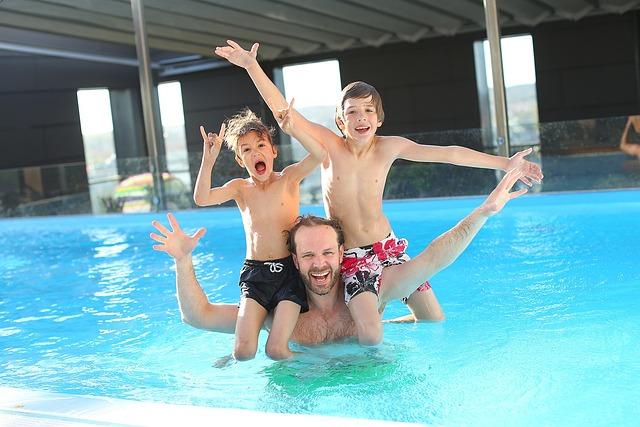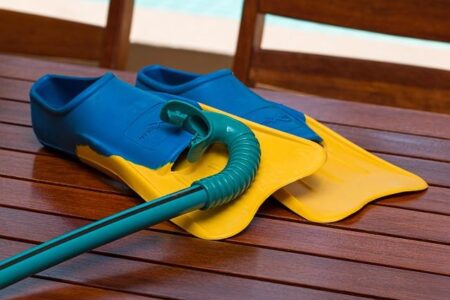Best Ways to Introduce Children to Swimming: A Lifesaving Skill for future Generations
As summer approaches and temperatures rise, families everywhere are turning to local pools, lakes, and beaches to cool off and enjoy the sunshine. However, amid the excitement of splashing around, safety remains a top priority, especially when it comes to children engaging in water activities. Swimming is not only a beloved pastime but also a crucial skill that can save lives. Wiht drowning being one of the leading causes of accidental death among young children, parents and caregivers are increasingly seeking effective methods to introduce their little ones to the water in a safe and enjoyable manner. In this article, we explore expert-recommended strategies for teaching children how to swim, emphasizing safety, fun, and building confidence in young swimmers.From basic water acclimatization techniques to engaging lessons that pique children’s interest, we look at the best practices that ensure swimming becomes a lifelong skill rather than a fleeting summer activity. Join us as we dive into the most effective ways to help your child make a splash in swimming while prioritizing their safety and fostering a love for water activities.
Building Water Confidence Through Playful Activities
Encouraging children to build their confidence in water can be as simple as integrating fun and engaging activities into their swimming experience. Parents can create a relaxed atmosphere by introducing aquatic games like water tag, splash contests, and floating races. These interactive play sessions not only break the ice but also foster a sense of camaraderie among young swimmers. It’s essential to keep the mood light and joyful; laughter can significantly enhance a child’s willingness to embrace the water and learn swimming techniques without fear.
A practical approach includes using colorful floating toys and inflatables that capture children’s interest.Implementing a variety of tools can help them understand buoyancy and movement in the water. Some effective choices are:
- beach balls for play and retrieval games.
- Pool noodles for balance practice.
- Sinkable toys for engaging diving activities.
The incorporation of these playful elements creates a solid foundation for children’s swimming skills and enhances their water experience while laying the groundwork for more structured lessons in the future.
Choosing the Right Swim instruction Options for Young Learners
When navigating the world of swim instruction for young learners, parents and guardians have a variety of options to consider. The first step is identifying a program that aligns with the child’s age, comfort level, and learning style. here are some popular choices:
- private Lessons: Tailored one-on-one instruction can cater to the unique needs of each child.
- Group classes: These foster a social habitat where children can learn from peers while still receiving quality instruction.
- Parent and Child Classes: Involving parents helps build trust and comfort in the water.
- Community Programs: Local organizations often offer affordable or free lessons, making swimming accessible to all.
It’s also beneficial to consider the credentials of the instructors. Many prosperous swim programs employ certified instructors with experience in teaching younger children, which contributes to a safer and more effective learning experience. Investing in certified programs offers various advantages, such as:
| Instructors’ Qualifications | Benefits |
|---|---|
| CPR and First Aid Certified | Ensures safety during lessons |
| Child Development Training | Tailors instruction to developmental milestones |
| Specialized Swim Instruction Certification | Provides proven techniques for teaching swimming |
Ensuring Safety First: Essential Tips for Parents at the Pool
As a parent, ensuring the safety of young swimmers is paramount when introducing them to the water. It’s crucial to establish strong safety protocols to mitigate risks. Here are some essential tips to consider:
- Supervision is Key: Always keep a close eye on your children while they are in or around the pool, regardless of their swimming ability.
- Know Your environment: Familiarize yourself with the pool layout, including shallow and deep areas, and always be aware of potential hazards.
- Teach Pool Rules: Make sure children understand and adhere to rules such as no running, diving in shallow areas, and asking for permission before entering the water.
- Use proper Safety Gear: Equip young swimmers with properly fitting life jackets or floatation devices, particularly if they are beginners.
In addition to safety measures,creating a positive experience around swimming can encourage your child’s comfort in the water.Here are a few strategies to enhance their learning:
- Start with Fun: Incorporate games and playful elements to make the learning process enjoyable.
- Gradual exposure: Introduce them to the water slowly, starting with shallow areas where they can stand.
- Encourage exploration: Allow children to play and get accustomed to the water while still following safety guidelines.
- Promotion of Swim Lessons: Consider enrolling them in professional swim classes to develop their skills under expert supervision.
Closing Remarks
introducing children to swimming is not just about teaching them a valuable life skill; it’s about fostering a safe and enjoyable relationship with water from an early age. By employing age-appropriate techniques and engaging activities, parents can create positive experiences that build confidence and reduce fear. As experts emphasize, the benefits of swimming extend beyond physical fitness, contributing to social skills and overall emotional well-being. With the variety of programs and resources available, there’s never been a better time for families to dive into swimming together. As summer approaches, parents are encouraged to take the plunge and explore the best methods to nurture their children’s aquatic journey, ensuring they swim safely and joyfully for years to come.





